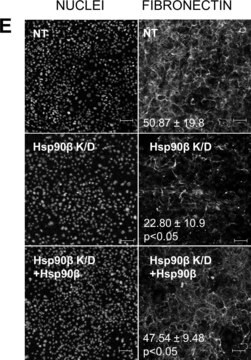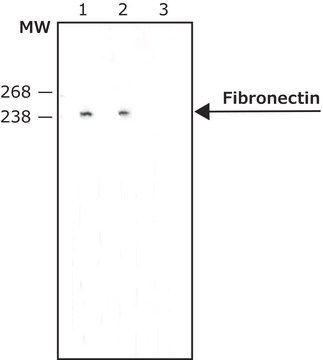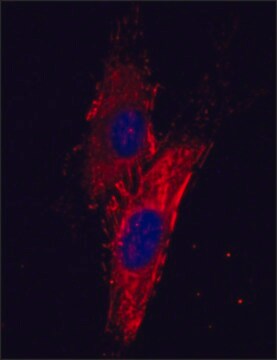AB2033
Anti-Fibronectin Antibody
CHEMICON®, rabbit polyclonal
Synonym(s):
Anti-CIG, Anti-ED-B, Anti-FINC, Anti-FN, Anti-FNZ, Anti-GFND, Anti-GFND2, Anti-LETS, Anti-MSF, Anti-SMDCF
About This Item
Recommended Products
product name
Anti-Fibronectin Antibody, Chemicon®, from rabbit
biological source
rabbit
Quality Level
antibody form
affinity purified immunoglobulin
antibody product type
primary antibodies
clone
polyclonal
purified by
affinity chromatography
species reactivity
mouse
manufacturer/tradename
Chemicon®
technique(s)
ELISA: suitable
immunocytochemistry: suitable
immunohistochemistry: suitable
radioimmunoassay: suitable
NCBI accession no.
UniProt accession no.
shipped in
dry ice
target post-translational modification
unmodified
Gene Information
mouse ... Fn1(14268)
General description
Specificity
Immunogen
Application
1:80 dilution of a previous lot was used in immunofluorescent staining of frozen mouse skin and liver tissues.
Radioimmunoassay:
A previous lot of this antibody was used in RIA.
ELISA:
A 1:200 dilution of a previous lot was used in ELISA.
Optimal working dilutions must be determined by the end user.
Cell Structure
ECM Proteins
Quality
Immunocytochemistry:
Representative image from a previous lot.
Confocal fluorescent analysis of NIH/3T3 using AB2033 rabbit polyclonal antibody (Red). Actin filaments have been labeled with AlexaFluor 488 -Phalloidin (Green). Nucleus is stained with DAPI (Blue).
Physical form
Storage and Stability
Analysis Note
Extracellular matrix in most tissue
Other Notes
Legal Information
Disclaimer
Not finding the right product?
Try our Product Selector Tool.
Storage Class Code
12 - Non Combustible Liquids
WGK
WGK 1
Flash Point(F)
Not applicable
Flash Point(C)
Not applicable
Regulatory Listings
Regulatory Listings are mainly provided for chemical products. Only limited information can be provided here for non-chemical products. No entry means none of the components are listed. It is the user’s obligation to ensure the safe and legal use of the product.
JAN Code
AB2033:
Certificates of Analysis (COA)
Search for Certificates of Analysis (COA) by entering the products Lot/Batch Number. Lot and Batch Numbers can be found on a product’s label following the words ‘Lot’ or ‘Batch’.
Already Own This Product?
Find documentation for the products that you have recently purchased in the Document Library.
Our team of scientists has experience in all areas of research including Life Science, Material Science, Chemical Synthesis, Chromatography, Analytical and many others.
Contact Technical Service






